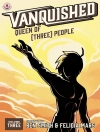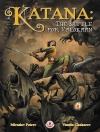In the early-20th century, strikes and union battles were common in industrial centers throughout the US. But nothing compared to the class warfare of the West Virginia Mine Wars. The origins of this protracted rebellion were in the dictatorial rule of the coal companies over the proud, multi-racial, immigrant and native-born miners of Appalachia.
Our illustrated history begins with Mary Harris “Mother” Jones arrival at the turn of the century. White-haired, matronly, and fiercely socialist, Jones became known as the “miners’ angel, ” and helped turn the fledgling United Mine Workers into the nation’s most powerful labor union. “Pray for the dead and fight like hell for the living, ” was her famous battle cry.
In 1912, miners led by stubborn Frank Keeney struck against harsh conditions in the work camps of Paint and Cabin Creeks. Coal operators responded by enlisting violent Baldwin-Felts guards. The ensuing battles and murderous events caused the governor to declare and execute martial law on a scale unprecedented in the US.
On May 19, 1920, in response to evictions by coal company agents, gunshots rang through the streets of a small-town in “Bloody Mingo” county. In an event soon known as the “Matewan Massacre”; the pro-union, quick-draw chief of police Smilin’ Sid Hatfield became an unexpected celebrity—but also a marked man.
Events climax with the dramatic Battle of Blair Mountain that pitched the spontaneous Red Neck Army of 10, 000 armed strikers against a paid army of gun thugs in the largest labor uprising in US history and the largest armed uprising since the American Civil War.
This graphic interpretation of people’s history features unforgettable main characters while also displaying the diverse rank and file workers who stood in solidarity during this struggle.
Sobre o autor
Gordon Simmons is a retired union organizer and is president of the West Virginia Labor History Association. He is now employed as a public defense investigator and an adjunct professor at Marshall University.












